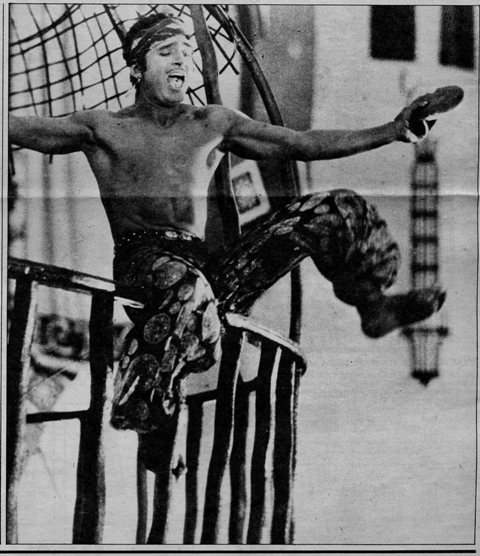
Before Douglas Fairbanks got kicked out of Denver’s East High School for an over-exuberant use of paint and ribbons on St. Patrick’s Day (and long before he became a movie star on par with Charlie Chaplin), he spent his time walking around on his hands outside the school. Fairbanks was born at 1207 Bannock Street in 1883. Fairbanks’ father left when he was young. His single mother raised him and Fairbanks ran wild. He and his friends released snakes on a trolley car, sending the passengers screaming into the streets. He threw a rock through the window of a Chinese laundry and dared the opium smokers inside to come and get him. In one of his favorite pranks, his Italian-American friend threw a rock through the window of their classroom while they sat in class, shattering the glass. At the same time, Fairbanks took a rock from his pocket and threw it onto the floor. He then retrieved the rock, saying, “Here it is teacher.” When his mother made him go to church, he poured vinegar in the altar wine and soaked the candle wicks.
After getting kicked out of school, Fairbanks worked as an usher in Denver’s Broadway Theater to get closer to the stage. When Frederick C. Warde’s traveling theater company came through Denver, one account suggests that Fairbanks, unable to get a formal introduction, scaled the theater wall and jumped into Warde’s dressing room. Warde was so impressed that he gave Fairbanks a small role in a production in Richmond, Virginia. Fairbanks then decided to go to Harvard for a special course of study. After some months, he abandoned Harvard for New York City, where he was awarded a role in the Broadway play Her Lord and Master. Normally, this would have been his entrance to a long career as a working actor. Instead, he abandoned the theater for Wall Street. He became a clerk. Though this was a low-level position, people told him that his knowledge and charisma assured him a rapid rise. But stock reports sounded like “Sanskrit” to him, so he quit. He worked in a hardware store in order to pay for the boxing, wrestling, and gymnastics lessons he took. After bumming around Europe with some soccer players, he decided to become a lawyer. He dedicated himself to the study of law, and again, everyone expressed innate confidence in his ability to succeed (a confidence that people always had in Fairbanks and one that unnerved him). He quit law and worked as a machinist.
What made Fairbanks different than a common dreamer was the seriousness with which he approached each new pursuit; at least for a little while. Finally, he returned to what he knew best, acting in Broadway plays, eventually making his way to Hollywood where he became a huge star. To learn more about this Denver native, come into Western History and Genealogy and view his newspaper clipping file, search our Western History Subject Index for information on articles, check out the book Douglas Fairbanks: The Making of a Screen Character by Alistair Cooke, and of course, search our catalog for movies and biographies.
